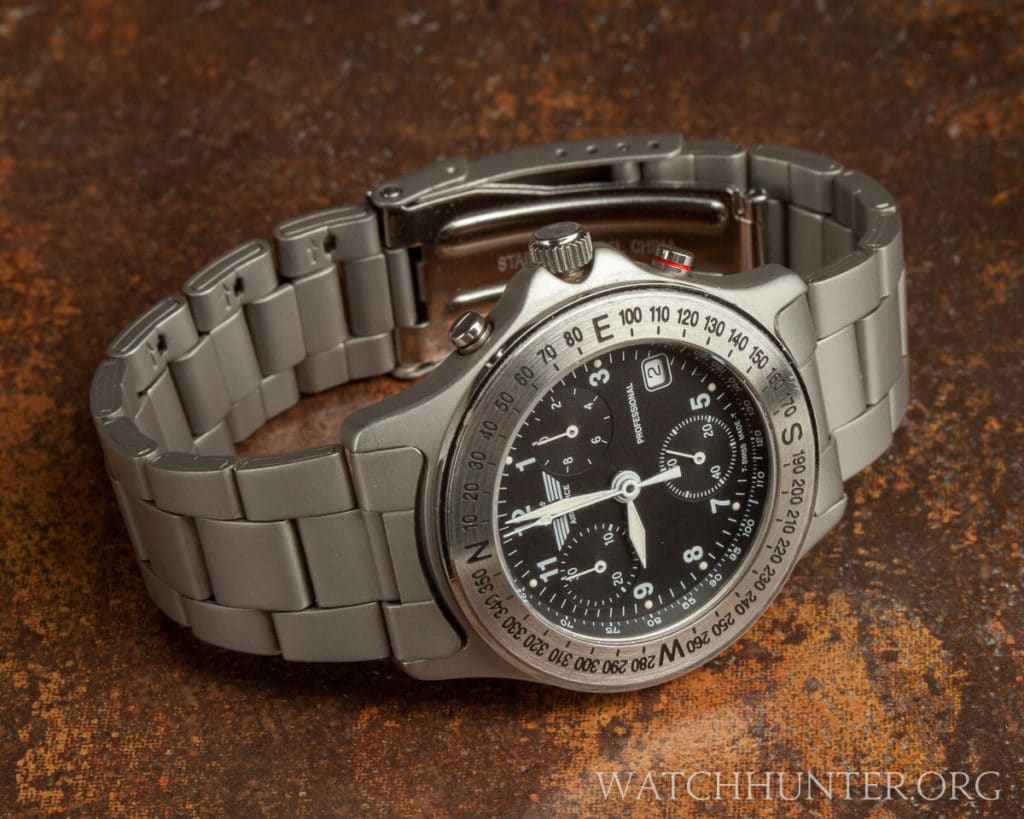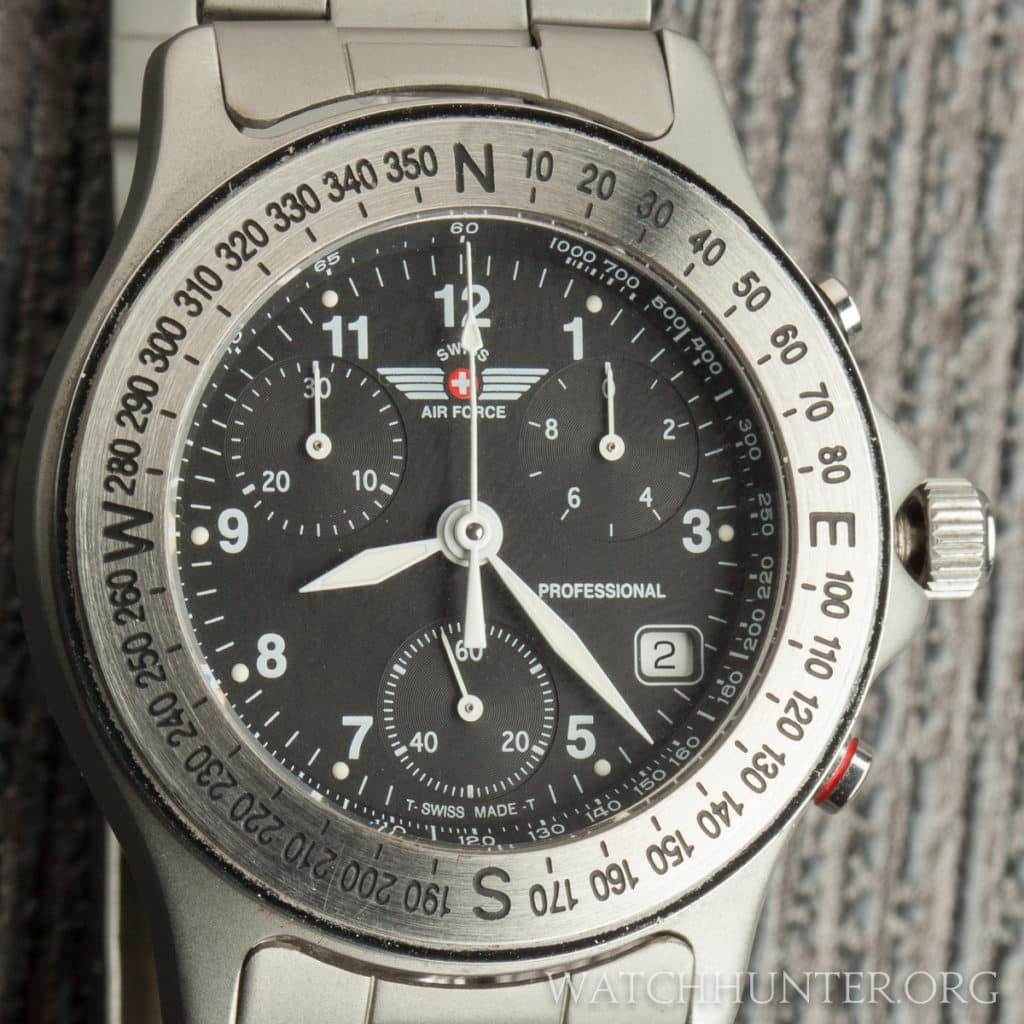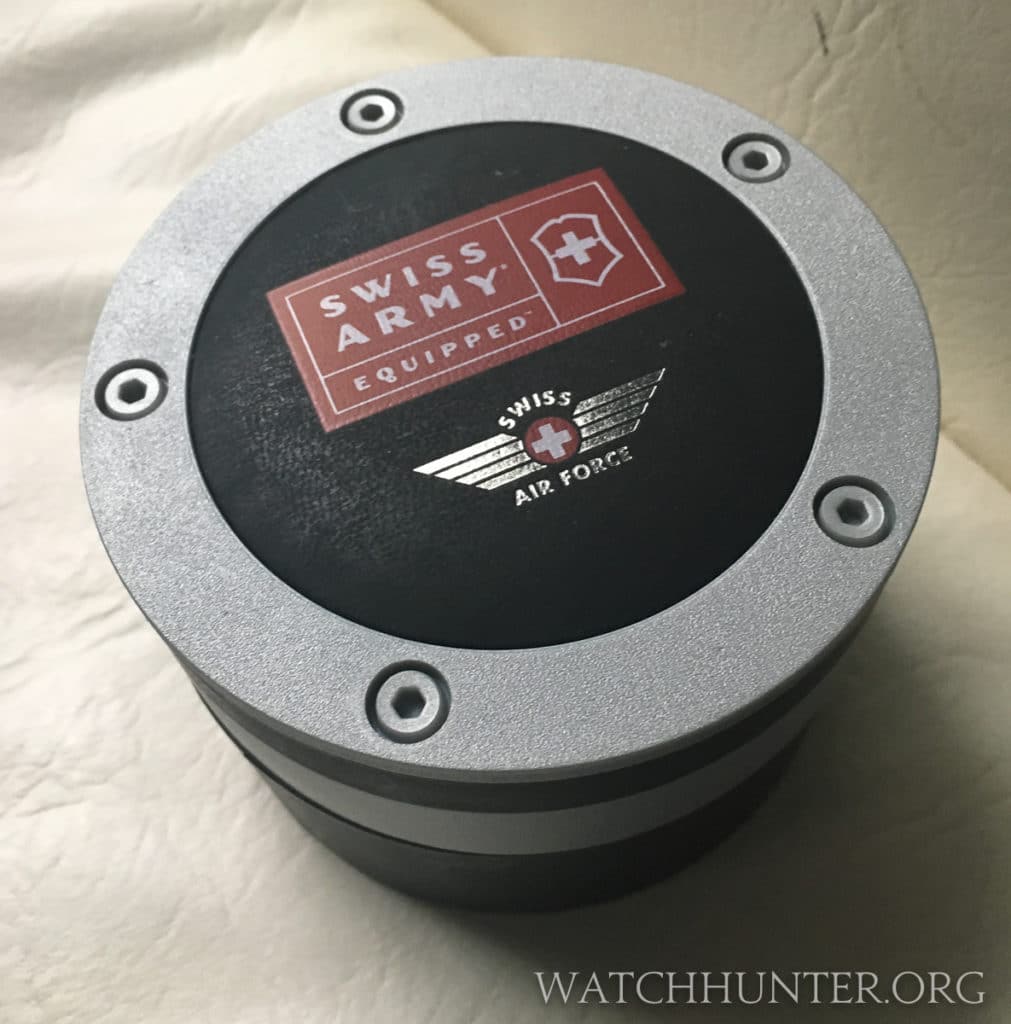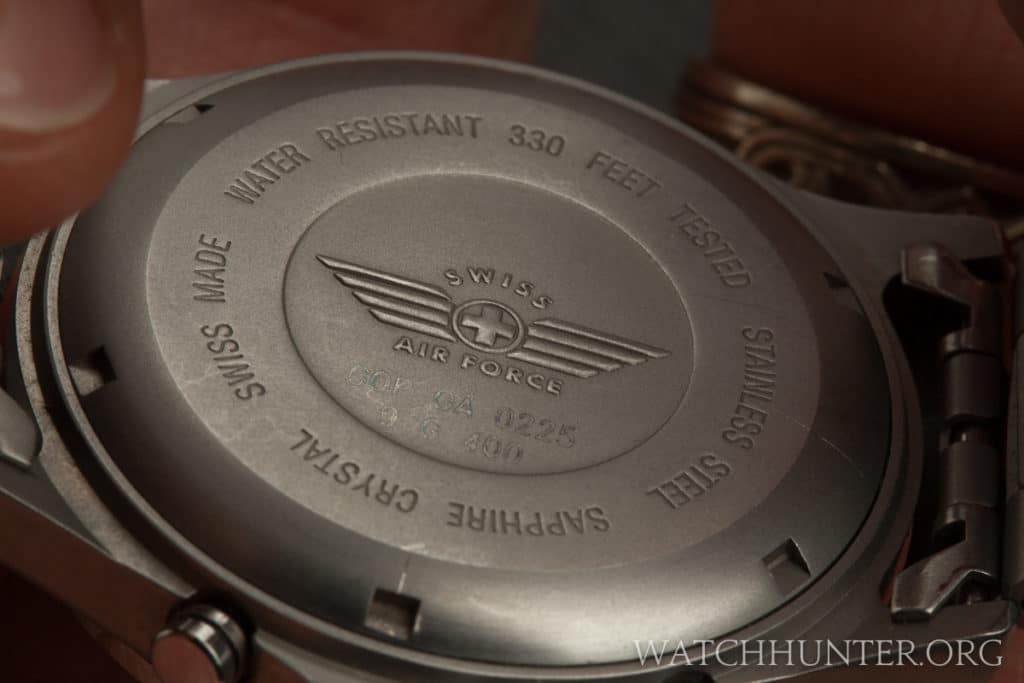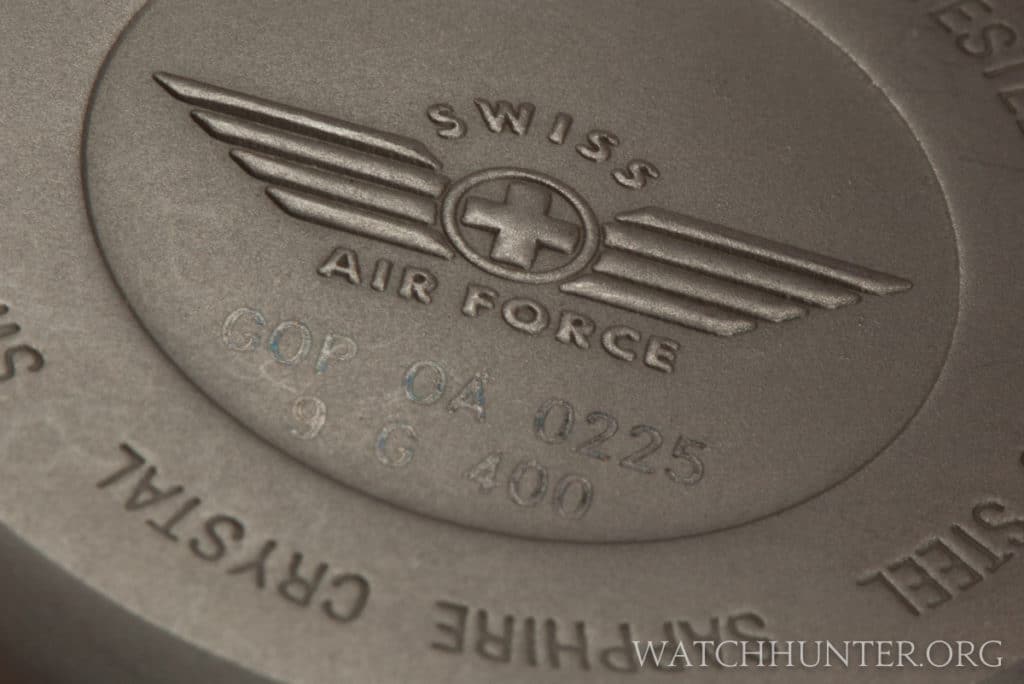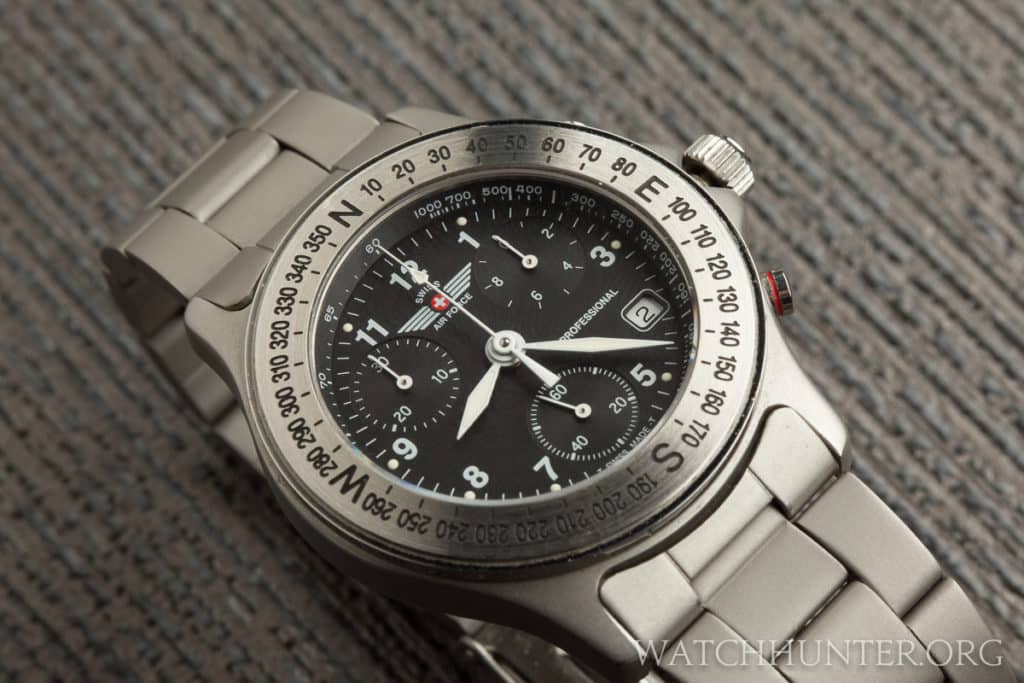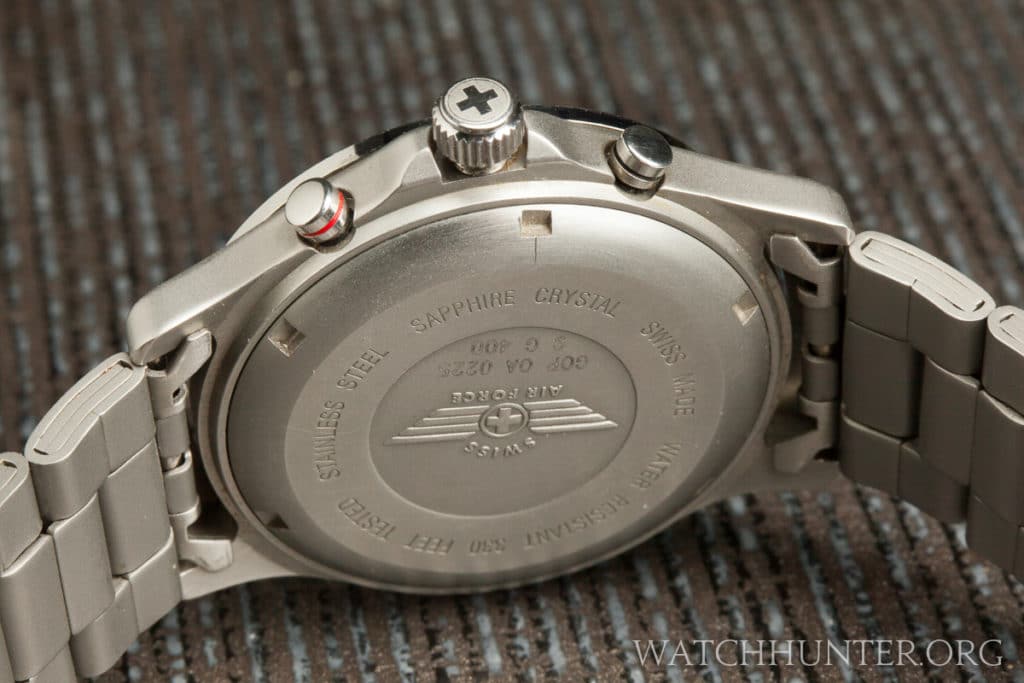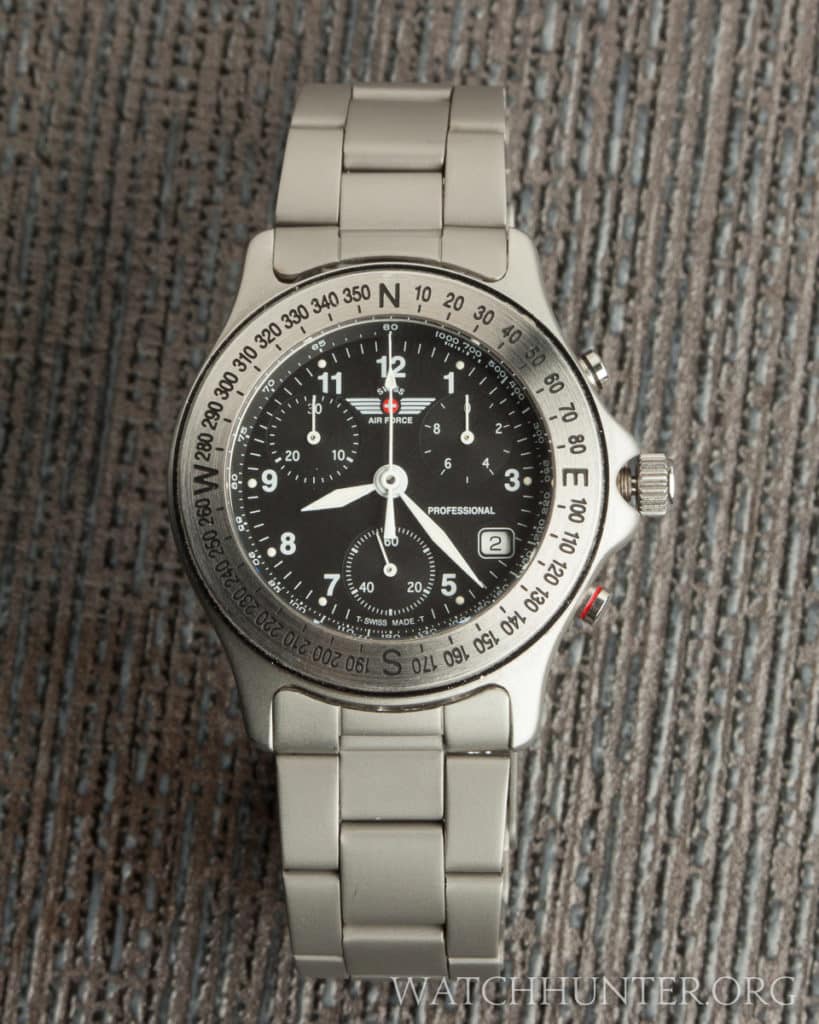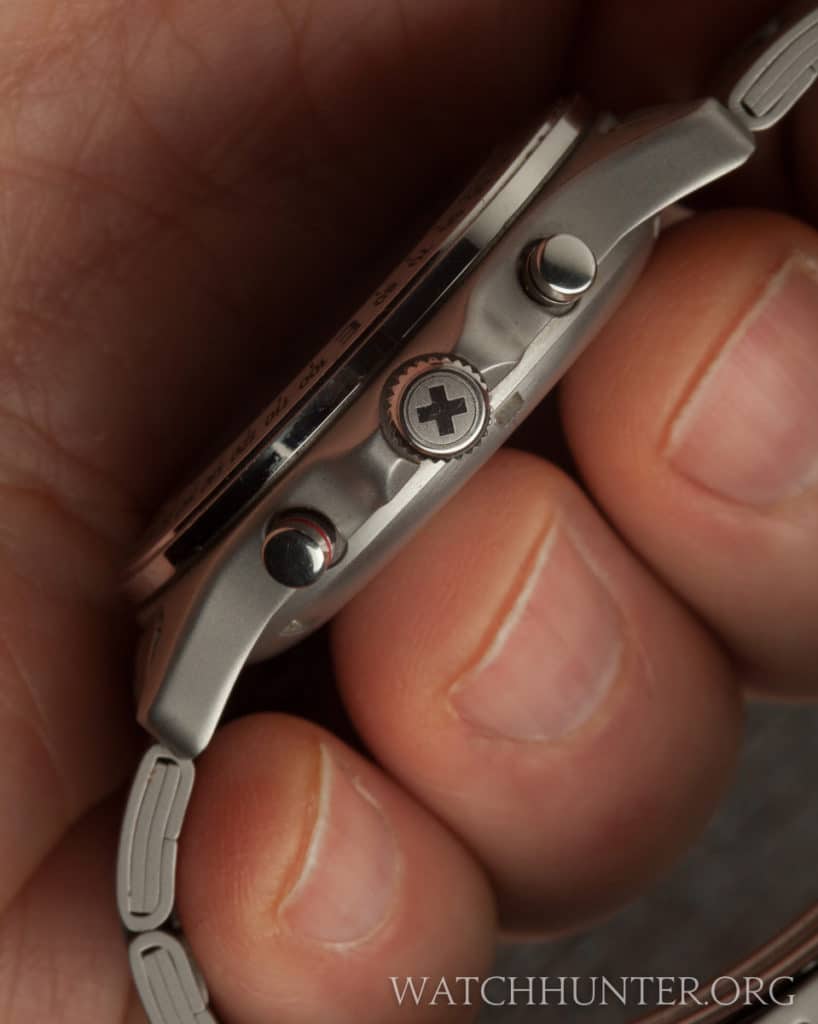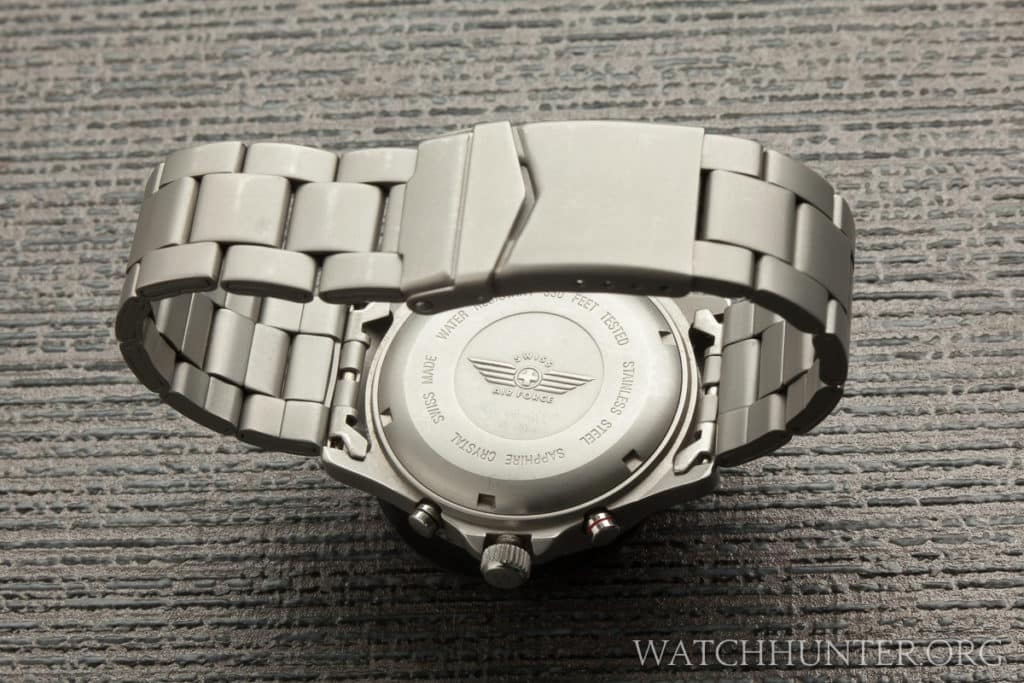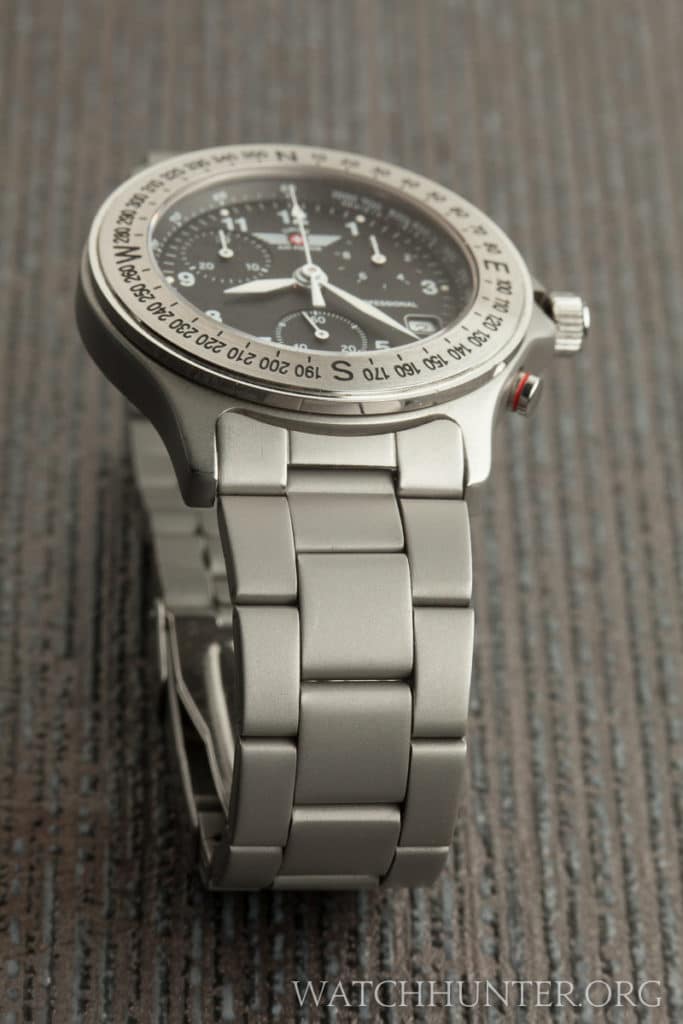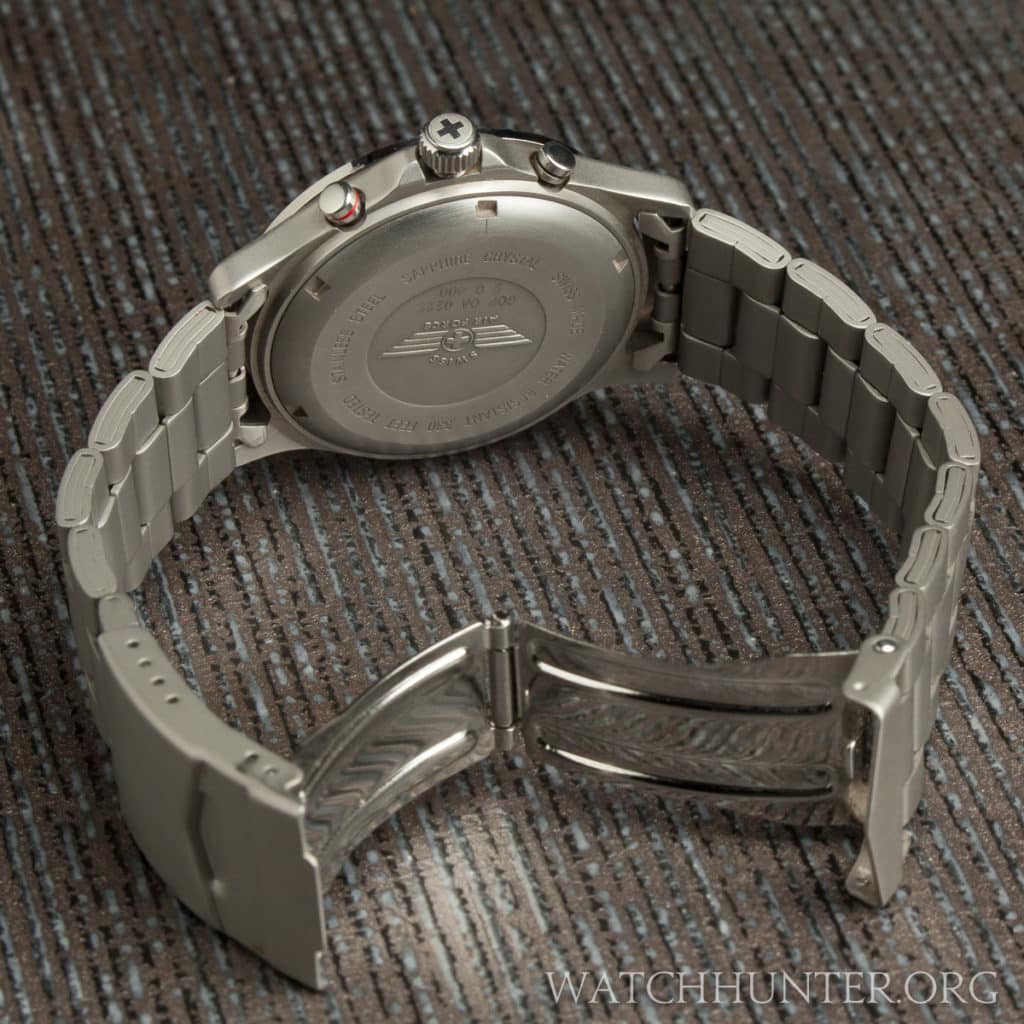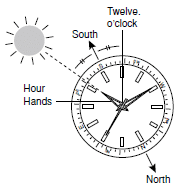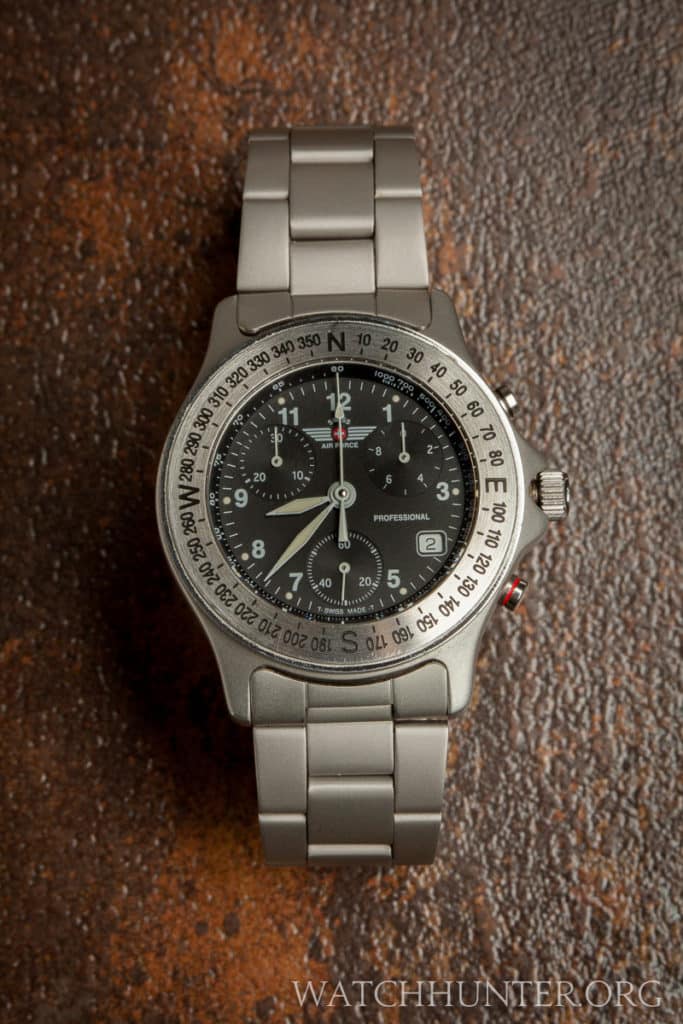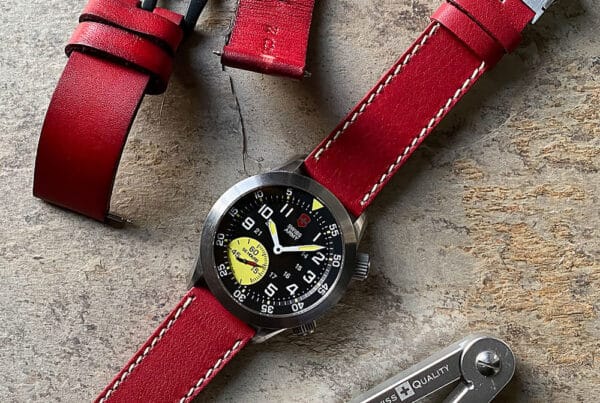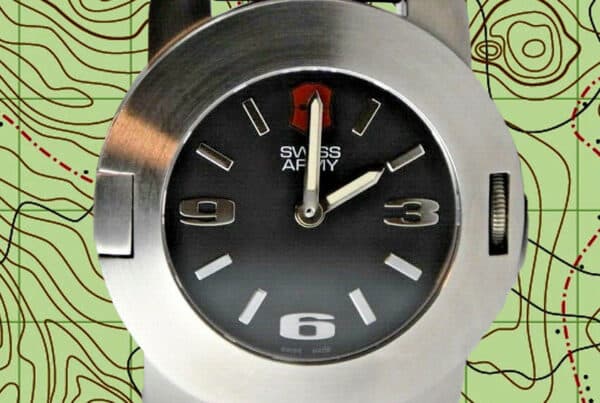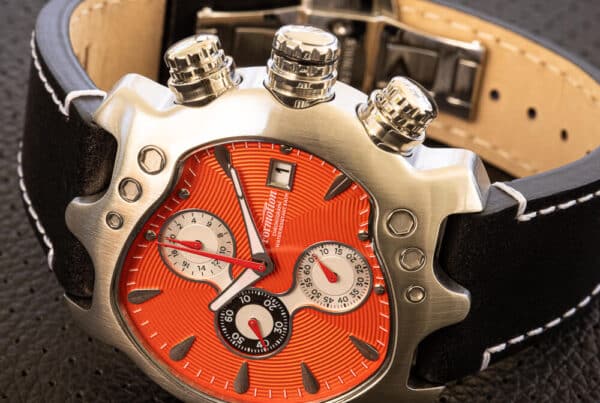The first thing that attracted me to the Swiss Air Force G-400 Professional was its good looks. I am a sucker for pilot chronographs, and I appreciate the juggling act that wrist watch designers have to perform to make all the elements work together. The Swiss Airforce 9G-400 is unusual for a pilot’s watch because it is slightly small and it has a compass bezel. Maybe there is more than meets the eye when it comes to this timepiece, and it’s worth a closer examination.
Most chronograph dials make compromises to fit all of the parts, and the Swiss Airforce is no exception. Some of the numbers, including 2, 6 and 10, were removed to allow room for the subdials. The number 4 was removed to make room for a black on white date window. And the number 1 and 11 are slightly overlapped. While this might drive some purists nuts, I think that Swiss Airforce did a good job balancing the dial elements. Another example of this philosophy appears in the subtle tachymeter scale placed on the sloped rehaut just outside of the main dial. It’s there if you need it, and barely noticeable if you don’t, which would be most of the time. Notice how the logo is wedged perfectly between the top subdials.
For the record, Swiss Airforce is a part of the Swiss Army brand. The Swiss Air Force logo seems to be used for pilot-related models such as SeaPlane, Hunter, Airboss and FA-18 models. The two logos appear in several user manuals and on the packaging. I rarely collect watches with this particular cross-and-wings logo, but the 9G-400 called to me. I much prefer to buy watches with the older Swiss Army logo (without Victorinox), which is one telltale sign that a watch might be Vintage Swiss Army. The Swiss Army shield logo is a bit more compact on the dial.
However, I have to admit that the Swiss Air Force logo looks killer in high relief on the case back. The case back also reveals that this model has a sapphire crystal and has been tested to 330 feet water resistance. I rarely see “tested” in this context and I wonder if that has anything to do with the PROFESSIONAL designation on the dial? Hmmm.
There is also a strange designation that is unlike the Swiss Army serial numbers that I have seen before that start with 24… or 241… This specimen reads GOP OA 0225. That last part might indicate a low production number, but who knows.
This particular model has a tri-compax arrangement, which just means it has three subdials. The Swiss Airforce 9G-400 can time a maximum of 30 minutes on the subdial located at 10:00 at an accuracy of 1/10th of a second that is read on the subdial at 2:00. The remaining subdial at 6:00 is a running seconds indicator, which is always ticking. by contrast, the large chronograph second’s hand only runs when the chronograph has been activated. This hand has a bullet-shaped lollipop near the tip and a wide counterweight on the other side. The hour and minute hands are an interesting set of sword hands.
The chronograph is activated by two pushers that have a unique embellishment. The top pusher has a black plastic ring and the lower pusher has a red plastic ring. This helps to remind the user of the functions. The top pusher starts and stops the chronograph and the lower pusher resets it.
The small crown is protected by a crown guard that is integrated into the case. Crownguards provide protection from accidentally shearing the crown off with a bump. If you think that the crown guard makes the watch too wide, then you might be surprised to know that the Swiss Airforce 9G-400 is only 40.7 mm wide including the crown (seen unscrewed below).
That translates into a case size of roughly 38 mm. Also, consider that the case height is only 9.5mm and the lug-to-lug with is a somewhat diminutive 44 mm and you’ll know that you are looking at a watch that is smaller than many pilot watches. This could be great if you like scaled-down watches that are very comfortable on the wrist.
Part of the secret to a thin watch is to use a quartz movement, which the Swiss Airforce 9G-400 does. That might not be for everyone, but a battery-powered watch is usually cheaper to purchase and maintain, only needing a battery change every 2-5 years. Some collectors call this style of watch “grab-and-go” because it does not require winding, setting of the time or date to be accurate. All you have to do is slide it onto your wrist, fasten the buckle and walk out the door. Perhaps it is the lack of manual interaction and a daily winding ritual that makes some watch purists claim a quartz watch to be less satisfying. Others might argue that quartz watches have no soul and point to the lack of a pulsing regulator that looks like a heartbeat. That is a discussion for a different article…
As a collector, I have an open mind. I don’t think that I should limit myself to just mechanical watches if I don’t want to. Different watches can perform different functions, scratch different itches and they can exist peacefully in the same watch box. If truth be told, a large majority of watch buyers choose a watch based on looks and reliability. Quartz satisfies both requirements and at a more affordable price. You know it’s true and nobody is going to revoke your watch nerd status for thinking such a thing… at least I hope not. Do they still burn horological heretics at the stake any more? haha
The 3-link wide metal bracelet has hollow links, which is the older (and maybe cheaper) way of making a bracelet. Instead of removing pins, you would push u-shaped connectors out to remove a link. The bracelet has fitted, hollow end links that slot exactly between the lugs. There is a little gap visible, but overall this feature makes the watch and bracelet visually mesh into a cohesive unit.
The bead-blasted finish on the bracelet and case also reinforces the pilot tool watch vibe. This treatment reduces reflections and gives the metal a matte appearance. The bezel’s thin sidewall, the pushers, and the crown are all polished for contrast. The unsigned deployant clasp is typical and with a foldover safety and has a few micro adjustment holes.
Finally, it’s time to talk about the compass bezel, which may be a misunderstood complication that requires more than intuition to use. The Swiss Air Force G-400 has a 360-degree compass bezel complete with major direction headings, though this one might be decorative more than functional. I have seen this feature on a field watch with a rotating bezel, and maybe only a boy scout or Army Ranger would know how to use it.
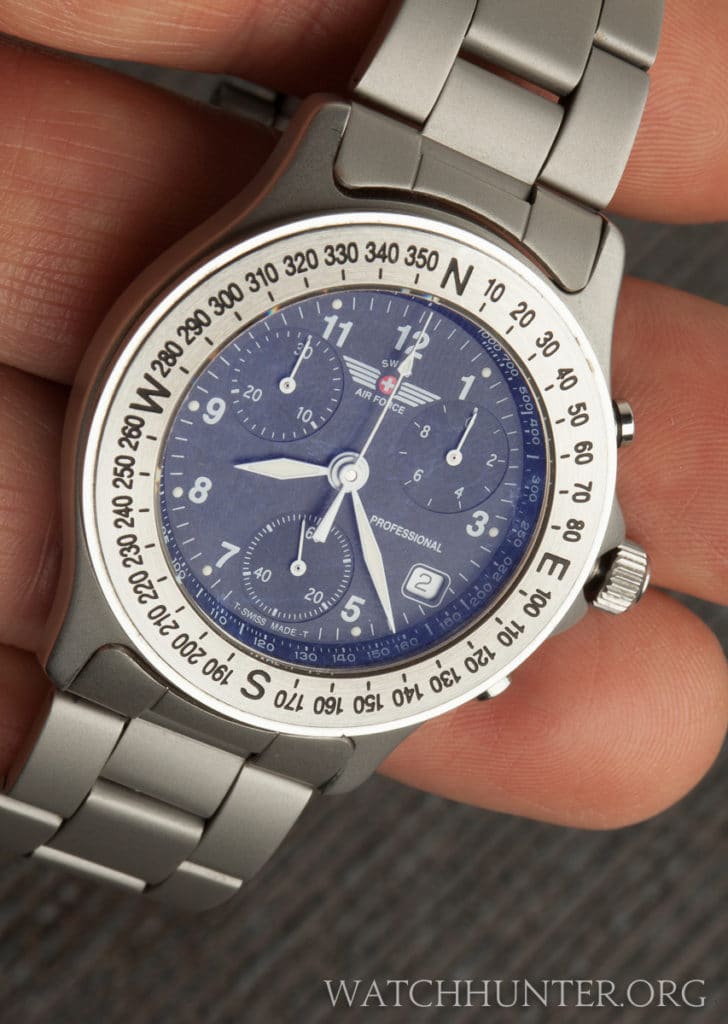
The stationary compass bezel might be more for show than use. Notice the blue anti-reflective crystal coating.
From Unique Watch Guide.com I found these directions:
Use the position of the hour hand and the position of the sun to determine direction. The direction will be an approximation and it’s important to consider that some discrepancy can occur due to different latitudes and seasons.
- Hold the watch horizontally.
- Align the hour hand of the watch with the sun’s direction.
- The central point between the hour hand and the 12 o’clock position approximately indicates South.
- If you then rotate the compass bezel so that its south indicator matches this will allow you to read other compass directions.
Everything seems fine until step four. I don’t believe that the bezel rotated on this watch so it makes me think that the compass bezel might just be for looks. I’m sure a true outdoors person could still use it (or any watch), but I think that I’ll just stick with a GPS.
The Swiss Air Force 9G-400 is no longer in my collection, though I sometimes miss it. The killer handset and small size was something that I enjoyed wearing. This watch is a casualty of my ongoing quest as a watch collection to keep moving forward. Something has to be sold or I would be considered a hoarder and not a collector. Just don’t ask my wife her opinion…. she’s a psychologist who can smell B.S. a mile away. haha


